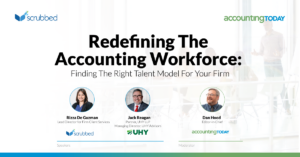Businesses engaged in leasing activities have always found the related accounting requirements to be tricky. With a new accounting standard now mandatory for all private companies involved in leasing activities, things just got even more complex!
Thankfully, the Scrubbed accounting team has significant experience working with businesses involved in leasing activities and a deep understanding of the new accounting standard, called “ASC 842, Leases”. Our experts have compiled answers to the questions most likely on your mind about this new standard, so you can adopt it effectively and stay in compliance with the requirements.
Check out how Scrubbed can help your business on Tax Compliance & Advisory
What is ASC 842?
ASC 842 is a new standard for lease accounting issued by the Financial Accounting Standards Board (FASB). This standard requires businesses to recognize lease assets and lease liabilities on the balance sheet and disclose key information about leasing arrangements, with a goal of improving financial transparency and ensuring consistency in financial reporting. The changes make it easier for users of financial statements to see a company’s exposure to risk, understand an organization’s true financial position, and make comparisons between organizations.
Under the previous standard (ASC 840), many types of leases could be accounted for off the balance sheet. Since lease obligations can impact a company’s cash flows and its overall value, a more faithful representation of a business’s lease arrangements provides better transparency about its financial position.
ASC 842 is the first major revamp to lease accounting since the release of Financial Accounting Standards No. 13, now known as ASC 840, in 1977. Its core provision is to recognize right-of-use assets and lease liabilities for virtually all lease transactions, and it also creates new accounting considerations for how to reflect operating lease arrangements.
When Does ASC 842 Go into Effect?
The standard went into effect as of 2022 for privately held companies; it was already in effect for most public companies.
If you run a private company and you operate on a calendar-year basis, you should adopt ASC 842 effective January 1, 2022 and follow ASC 842 in your year-end reporting as of December 31, 2022.
What Will I Need to Do Differently Under ASC 842?
If your company has leasing activities, you’ll need to follow the ASC 842 standard to ensure you’re accounting for those leases properly and meeting the updated reporting requirements.
Specifically, you’ll need to:
- Create an inventory of your lease contracts and review those contracts in detail.
- Review recurring payments that might contain a lease.
- Understand the size and complexity of your property lease portfolio.
- Map out a strategy for implementing ASC 842, which involves understanding various adoption options and measures known as “policy expedients” that can facilitate a smooth transition.
- Accurately classify your leases as operating or finance leases based on ASC 842 definitions and update your chart of accounts accordingly.
- Communicate with any creditors/lenders involved, in the event the standard impacts debt covenants.
- Develop accurate financial statements that comply with the ASC 842 reporting requirements.
- Discuss with stakeholders the impact of ASC 842 on financial reporting (e.g., the impact on relevant ratios).
- Ensure anyone in your organization who’s involved with lease arrangements understands how the new standard will impact budgets and financial reports.
- Decide whether specialized lease accounting software can help you comply with the new requirements.
How Will ASC 842 Impact My Organization?
ASC 842 impacts both lessors and lessees, but not to the same degree.
For lessors, the changes represent more of a refinement than a complete remake when it comes to lease treatment. While the new standard doesn’t fundamentally change lessor accounting, there are some important differences compared to ASC 840, which still applies to lessors. For example, ASC 842 aligns lessor accounting guidance with the guidance in ASC 606 (revenue recognition), and it states that financial statements should now generally replace the word “rent” with “lease.”
ASC 842 has a more significant impact on lessees. If you are a lessee, you’ll generally see higher right-of-use assets and lease liabilities on your balance sheet for two reasons: You’ll be capitalizing your operating lease arrangements (instead of recording them as an outright expense as you accounted for it under the old standard) and you’ll most likely be using the option of a risk-free rate in lieu of the incremental borrowing rate (IBR).
While ASC 842 ideally requires using the rate implicit in the lease, with the IBR used in the absence of an implicit rate, as a private company you have the expedient option of using the risk-free rate by class of the underlying asset—meaning, you don’t have to apply this rate to every lease. Since the risk-free rate is usually lower than the IBR, it will result in higher right-of-use assets and lease liabilities and a higher net present value of future cash flows. You should also be aware that your debt-to-equity ratio is likely to increase due to the combined effects of using the risk-free rate and capitalization of your operating leases (assuming all other factors remain constant).
ASC 842 will also impact your statement of cash flows presentation, since the amortization of operating lease right-of-use assets and lease payments are now presented separately under operating activities, using the indirect method of cash flows presentation. However, only the presentation will change; the actual cash flow remains the same.
Finally, implementing ASC 842 will require you to disclose significantly more information about your lease obligations than you have in the past—from the nature of all leases and subleases, to lease-related costs, and many other details.
Keep in mind that the new standard applies to all active leases with an original contract of longer than 12 months, even if the remaining term is less than 12 months as of January 1, 2022. Leases with an original term of less than 12 months can still be capitalized if you don’t use the short-term lease expedient. In addition, leases with an original term of less than 12 months can still be scoped in the requirements of ASC 842, as the short-term lease expedient is only an option.
Why is ASC 842 Challenging to Comply With?
This new standard requires a greater degree of judgment on the part of private companies when it comes to reporting on leases, along with much more extensive disclosure requirements than you were accustomed to under the previous standard. While it provides greater transparency about a business’s financial position it also makes lease accounting more complex, spurring more questions and the potential for confusion.
Why Did the Industry Change the Lease Accounting Standard?
Much of the impetus for ASC 842 stems from past financial scandals like the Enron case. Under the previous standard, a company with significant leases (like Enron) could publish financial statements that complied with the standard but didn’t provide a true picture of the business’s financial position or its degree of risk. For example, only leases that met certain financial thresholds were required to be included on the balance sheet.
After Enron dissolved, the US Securities and Exchange Commission (SEC) tasked the FASB to develop better standards for disclosing lease arrangements. The resulting standard, ASC 842, requires public and private companies (excluding government entities) and certain nonprofit organizations to include much more detailed information about lease obligations in their financial statements.
What Should I Do Next?
Complying with ASC 842 is an important but complicated undertaking. To ensure you meet all the new requirements correctly and as efficiently as possible, it’s best to turn to the outsourced accounting experts at Scrubbed.
The Scrubbed team has extensive experience with lease accounting and deep knowledge of ASC 842. We can help you make a streamlined transition to the new standard and avoid tying up your in-house team’s time and energy trying to understand all the technicalities and complexities.
Contact Scrubbed to learn more about ASC 842 and how you can get started on a smooth transition to this new standard.




